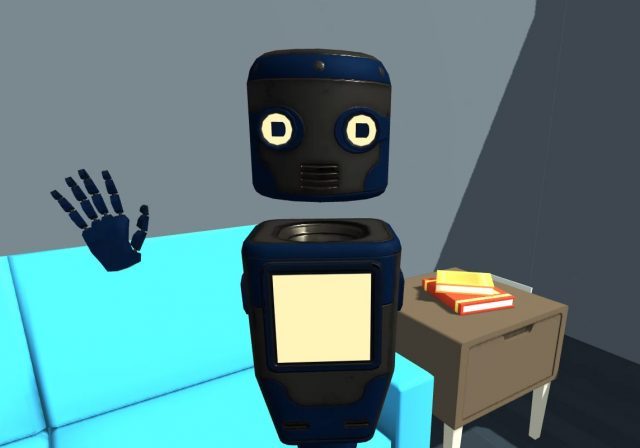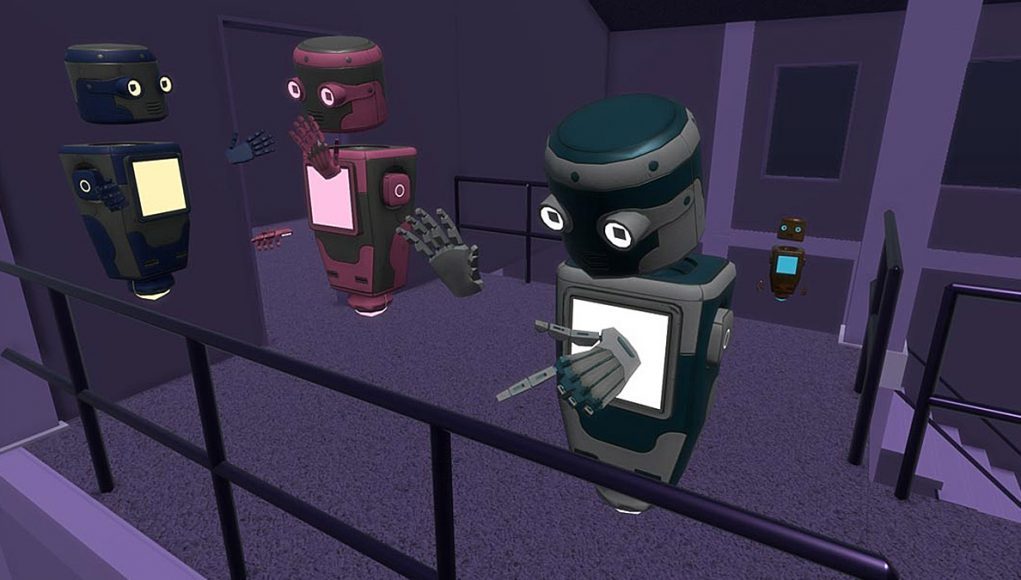As part of Mozilla’s ongoing efforts to make VR a first-class citizen on the web, the company today announced Hubs, a WebVR-based social experience which makes for effortless, one-click creation of virtual spaces which anyone can join—from smartphones desktop browsers to VR headsets—directly from the browser. The approach removes a heap of barriers that traditionally stand between two people and a face-to-face conversation in VR.
Remote presence is one of VR’s greatest strengths. Video chatting has been widespread for more than a decade now, and while it’s a nice way to see the person you’re talking to, it doesn’t feel like you’re actually in the same room with them, not to mention that ‘interacting’ in such a context amounts to little more than sending files or links back and forth to each other.
In VR, your sense of actually being in the same room as the other person is much more pronounced, and interactions happen by means of manipulating objects naturally with your hands, using gestures and tools to communicate ideas in ways much closer to face-to-face communication in real life. There’s also the all important unspoken body language which comes through much more clearly in VR, especially as it relates to the way that group conversations often rely on nonverbal cues to pass the baton of the ‘active speaker’ from one person to the next.
For those reasons, I’ve actually come to prefer the experience of taking remote meetings inside of VR rather than by phone or video chat. But those advantages in VR have, until now, come with some pretty big downsides: the person (or people) I’m meeting with would need to download an app in advance—which typically involves creating a new account—then figure out how to add me as a friend to their account, and then figure out how to actually join the same virtual space that I’m in.
It’s a cumbersome process and, for people who aren’t VR savvy, it tends to be more trouble than it’s worth for a quick 30 minute chat with a business acquaintance, even if they have a VR headset close at hand.
I’ve been yammering on Twitter in the last few months about this friction that’s preventing me and many others from capitalizing on a clear-cut value proposition that VR should be great at providing—that meeting up with someone in VR should be as simple as clicking a link which could be shared through existing challenges of communication like messaging apps or the web. Today, Mozilla has made that a reality.
Hubs is Mozilla’s WebVR-based social platform (which they’ve released as an “experiment” for now), that allows you to create an virtual chat room literally in seconds. Once you’ve made the room you can share it with others by sending them your room’s URL; when someone clicks the link, they are brought directly into your room, allowing you to very quickly start a conversation. And this all happens inside of your existing browser, with no need to download new apps or make a new account.
The beauty of WebVR means that this works across any browser, whether it’s on a smartphone, tablet, laptop, or desktop. And if you’re using a browser that supports WebVR out of the box then you’ll be able to join the room with a range of VR headsets. No matter which device, or which combination of devices are connected to the room, everyone can see each other, voice chat, and interact.

Performance wise, Hubs feels like pretty much any other social VR app I’ve used, and fully supports all the stuff you’d expect, like hand input, locomotion, and direct object interaction. And while the platform’s feature set is limited in this experimental phase, the company has demonstrated a strong foundation, with a unique advantage, that it intends to build upon.
On the project’s announcement post, Mozilla’s VR team offers a glimpse of what they’re working on next for Hubs:
Custom Spaces – As mentioned in our original announcement, we think creating your first virtual space to spend time in should be as easy as creating your first website. We’ve already shown off some early work towards a space construction kit to reducing the barrier to creating virtual spaces. Needless to say, spaces created with this kit will be designed to work well with Hubs, so that you can quickly share a link to have others meet you there. You will also be free to use your own fully custom GLTF scenes with Hubs.
Avatars and Identity – Mixed Reality provides an unprecedented opportunity to design things in a way that ensures people can express themselves on their own terms. As part of this, we think that you should always have as much control as possible over how you appear in Mixed Reality. We are working on ways to reduce the barriers to avatar customization so anyone can create an avatar that embodies how they want to be seen. We’ll have a lot more to say about this later in the year.
Existing Tools – We think Mixed Reality communication should complement, not replace, the existing ways we connect on the web, like chat and voice. We will be exploring ways to integrate Hubs with existing communications tools, so people can start experimenting with Mixed Reality as a new way to spend time together alongside the tools they already use.
– – — – –
Thanks to its drastically lower friction and wide device compatibility, Hubs is definitely a candidate for becoming my new defacto VR meeting space. I’ll be experimenting with it over the next few weeks to see if it can dethrone Facebook Spaces.







